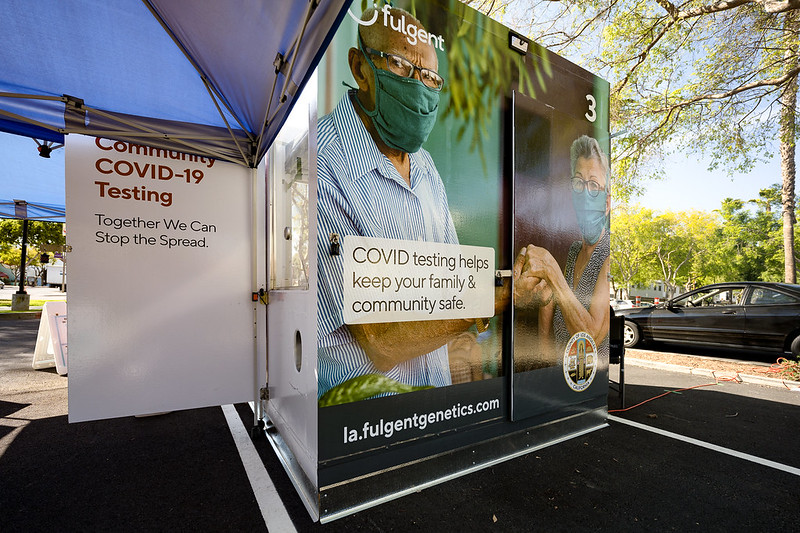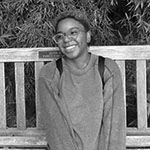Reimagining Health Care in Community Design and Planning
Glynda Tucker | May 20, 2022

As we witness prominent disparities in COVID-19 infections, healthcare practitioners and communities have been asked to take a step beyond identifying social determinants of health toward reimagining infrastructural changes that perpetuate health disparities. As evidenced by the abundance of pop-up COVID testing sites and vaccination clinics in parking lots, gymnasiums, and downtown plazas around the world, one of the key determinants of health worth investigating is access to health care.
As community leaders and public health practitioners attempted to disseminate resources and information during the pandemic, they often looked to existing formal and informal community centers in their neighborhoods as key access points. Utilizing existing relationships and the familiarity communities have with their churches, schools, recreation centers, downtown cultural hubs, community health centers, and parks, community-based health interventions were often vital to providing safe, trusted, and necessary health services to populations that needed them most. So what does it look like to translate such a valuable approach beyond COVID, to something like primary care and preventative medicine?

Mobile Health Care Units
A mobile health care unit is defined as a “ customized motor vehicle that travels to communities to provide health care.” With the intention of addressing a specific target group that is in need of affordable, accessible, trustworthy care, mobile health care units can, and often do, address racial and socioeconomic health equity.
A systemic review of existing mobile health care units in the United States over the past 20 years set out to highlight the key strengths and limitations of this model. The study found that over half of the mobile health care unit patient population identify as people of color and often belong to vulnerable communities. These units are developed specifically with these groups in mind addressing and removing specific barriers to accessing care like transportation, distance, undocumented status, linguistic and cultural isolation, affordability, lack of insurance, and mistrust of formal, traditional health care settings.
Whether they operate independently, or are linked with larger organizations such as hospital systems, universities, community health centers, or faith-based organizations, mobile health care units are a critical way to operationalize the goal of addressing health equity. Increased investment and development of new mobile health care units is a particularly effective way to reimagine traditional models of health care.
Pop-up Health Care You Can Trust
Similar to mobile health care units, pop-up clinics seek to situate vital resources at important cultural hubs, often with trusted community partners. During the pandemic, an informal group of practitioners in Philadelphia, PA, called the Black Doctors COVID-19 Consortium, began placing pop-up COVID testing clinics at Black churches in the community. Knowing that Black communities had been disproportionately affected by COVID infections, these doctors partnered with trusted Black community leaders to locate clinics in institutions at the center of community life, at a time when people were looking for local guidance and resources. Pastors helped with demonstrations at the pop-up clinics, and promoted them during weekly sermons.
Can you imagine if this approach was used to promote year-round primary care and other preventative services? It would allow people to go to familiar and culturally valued places for health services, with support from those whom they trust. For services like prevention screening and counseling, putting health care in its most accessible, visible, convenient, and culturally resonant form can develop more frequent and attentive management of community health.

Community Health Workers
A recent health survey found that the average American only visits the doctor four times a year whereas in countries in like Japan the yearly average is closer to 13. Primary reasons cited for infrequent visits were cost, everyday life (work, family obligations, etc.), and transportation. These reasons not only reflect cultural differences, but also structural barriers that exist on local and national levels. For a person living in poverty, health care costs are more than just insurance coverage, but include costs of forfeiting wages when taking time off for the doctor’s appointment, paying for additional childcare, and finding reliable transportation – all to try to squeeze any health issues into a 10-minute appointment, unsure when you will be able to make it to a doctor again.
How can we imagine a solution to overcoming these barriers? Through their work at the local level, community health workers may be an important part of this solution. A community health worker is defined as “a frontline public health worker who is a trusted member of a community or who has a thorough understanding of the community being served.” They are quintessential liaisons to the community and key to coordinating the most effective way to enhance access and lessen these sometimes small, but cumulative, burdens. Community health workers are often employed by mobile health care units and would also be key to coordinating pop-up clinics, advising where they should located and what service they should offer. Reimagining traditional health care models requires greater empowerment of community health workers, as well as finding ways to compensate people and institutions who initiate this type of important community health care in their neighborhoods.
Adopting Community-Based Strategies
Communities should build off experiences during the pandemic and invest in strategies for developing community-based health infrastructure and programs to address long-term health disparities. Opportunities include:
- Adopt mobile/pop-up clinic strategies in underserved communities to provide preventative and primary care services on a regular basis. Looking at the distribution, placement, and utilization of mobile and pop-up clinics in partnership with trusted organizations can be a metric for illustrating what community-based interventions should look like. More specifically, developing flex-use spaces in parks, community centers, schools, and churches to host regular mobile or pop-up clinics is a critical way that communities can invest in these programmatic strategies.
- Invest in local community leadership through community health worker training programs. In April 2022, the U.S. Department of Human and Health services launched a $226.5 million grant toward community health worker training programs to be disseminated to local health departments and community-based organizations across the country. Communities looking to empower trusted community leaders and develop collaborative infrastructure for community health interventions have a key opportunity to prioritize these efforts.
- Change land use regulations to allow for mobile infrastructure to transition to permanent neighborhood clinics. One way to do this is to zone for Accessory Commercial Units in residential neighborhoods that would allow community health workers to work out of their homes. Neighborhood clinics could uniquely offer regular, walkable access to health care in communities that face prominent transportation barriers to frequent doctor visits, while at the same time allowing community health workers to immerse themselves in the neighborhoods they serve.
Access to care is not the only determinant of health, but it is a critical point where profound disparities are well-documented. Throughout the pandemic, the availability of health services in a given neighborhood was a determinant of how easy it would be to get a free COVID test, quality personal protective equipment (PPE), COVID vaccines, and accurate health information about transmission in your community. Just as the food truck/pop-up model has reimagined local restaurant development, community-based strategies might help us reimagine health care, delivering equitable health services that are trusted, affordable, nearby and culturally resonant.

Glynda Tucker is a Master of Landscape Architecture student at Cal Poly Pomona. She holds an undergraduate degree in Environmental Sciences with a concentration in Environmental Toxicology from the University of California, Riverside. Drawing upon her experiences in public health and researching culturally resonant design, she is passionate about studying and working at the intersection of racial health equity and community-based design and planning interventions.